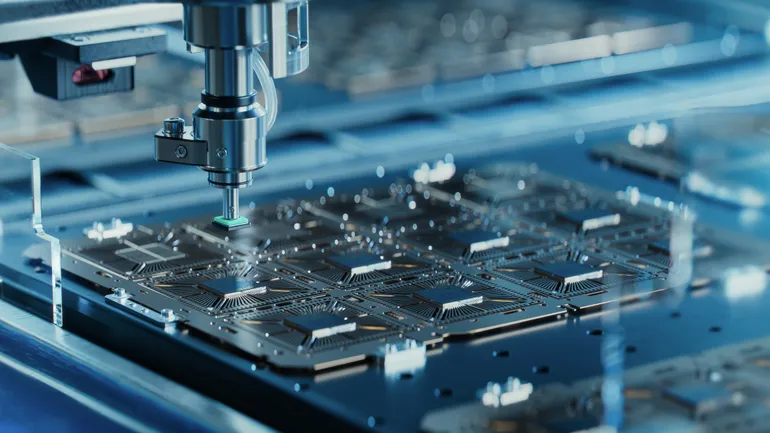Darin Hart is senior vice president of advanced technology at Boston-based Suffolk Construction. Opinions are the author’s own.
As the backbone of modern technology, the semiconductor industry is experiencing unprecedented growth. This surge is fueled by increasing demand for advanced electronics, from smartphones and laptops to electric vehicles and artificial intelligence. During the pandemic, the need to manufacture advanced electronics on U.S. shores became even more apparent.
To meet this demand, the construction industry must evolve, embrace new technology and enhance operational efficiency. But the challenge to date is our industry has not kept up with technical advances or productivity gains. We builders can buck that trend now by using technology to build technology. Here’s how.

Darin Hart
Courtesy of Suffolk Construction
Building Information Modeling: BIM has become a game-changer for construction projects in the semiconductor industry. By creating detailed digital facility models, construction teams can simulate processes, optimize workflows and anticipate challenges before they arise. This proactive approach leads to faster project completion times and reduced costs, allowing companies to stay competitive in a fast-paced market.
Offsite manufacturing: Offsite manufacturing is critical to the construction of fabs today due to the size and complexity of these builds. Producing assemblies offsite saves time and money and provides a controlled working environment, creating safer production of subassemblies.
Automation and robotics: Automation and robotics can increase production and efficiency. Via Suffolk Technologies, a venture capital platform affiliated with Suffolk, we work with built world startups to pilot and scale their products on site. These include KayaAI, which automates and streamlines the procurement process, and Rugged Robotics, which uses robotics to perfect field layout.
Energy-efficient designs: New semiconductor fabs include renewable energy sources — such as solar and wind — advanced HVAC systems and efficient lighting. By reducing energy consumption, companies can lower operational costs while contributing to global sustainability goals. Suffolk Design, our in-house design and design management team, is partnering with engineers and architects to streamline the design-construction workflow and reach the most constructible and energy-efficient designs possible.
Water conservation technologies: Water is a critical resource in semiconductor manufacturing, used extensively in the fabrication process. Innovative construction techniques include recycling systems and rainwater harvesting. In this area, Suffolk Technologies works with WINT Water Intelligence, which detects and stops leaks at the source using artificial intelligence, alerting users when water is leaking and automatically shuts it off.
Material selection: Designs and technologies are increasingly promoting non-traditional building materials. Many construction firms are opting for recycled or eco-friendly materials, which not only reduce waste but also often result in better performance. This commitment to sustainability is becoming a differentiator in the competitive landscape of semiconductor construction.
Workforce development: Construction companies must invest in technology to ensure that team members want to join the field and are equipped with the necessary skills to build and operate new factories effectively. Many companies are establishing training programs to upskill their workforce in areas such as robotics, BIM, and sustainable construction practices. Partnerships with educational institutions can facilitate knowledge transfer and ensure a steady pipeline of skilled workers.
Faced with the dual challenge of meeting skyrocketing demand and closing the skills gap to build these facilities, we’re at a pivotal moment. As technology continues to evolve, so too will the strategies and approaches to building the facilities that enable innovation in the semiconductor sector. By staying agile and forward-thinking, the semiconductor construction industry can not only keep pace with technological advancements, but also lead the charge into a more efficient and sustainable future.
